It’s no secret that the way people shop has changed dramatically over the last two decades. After all, digital marketing has reshaped nearly every aspect of our lives. But, should your company be considering digital luxury marketing for your prestige brand?
It wasn’t too long ago that we all still had to get up and go to the store when we needed something (UGH, right?). Now, we can order the most mundane items without even using our hands. Thanks, voice assistance!
Perhaps more notably, the first generation to grow up almost entirely online (Generation Z) is now entering the workforce, positioning them to become the next big consumer group after Millennials.
That’s an entire generation of digitally savvy shoppers who have never known a world without the Web.
It comes as no surprise, then, that every industry has been disrupted by digital marketing in one way or another, and many are scrambling to appeal to the plugged-in crowd.
So, how are luxury brands faring?
Luxury Online Marketing in the Digital Age
For the most part, the luxury market is changing to keep up with modern consumers. Naturally, they've been able to widen their reach and make more sales through digital marketing—not just domestically, but globally. According to Bain & Company, the global luxury market saw a growth of 5% in 2018, with online luxury sales jumping 22%.
But ever-shifting consumer expectations in the Digital Age can still present a challenge for luxury retailers, especially their marketers. Technology often moves faster than most companies can keep up with, as do consumer habits.
For many consumers, the lines between online and in-store are becoming increasingly blurred, turning up the pressure for brands to adopt an omnichannel approach.
As McKinsey puts it:
The typical luxury shopper now has a mixture of online and offline interactions with the brand, seeks advice from peers on social media or looks for suggestions from trusted influencers before entering a store. Of course, an Instagram post surely follows a purchase.
Unfortunately, many brands are still struggling to blend modern digital and traditional approaches, since they are either unable to keep up with rapidly emerging technologies or are leaning too heavily on an approach that silos online and offline into separate experiences.
Consumers want a seamless shopping experience, so we’re going to dig into the different ways luxury brands can adapt using luxury online marketing to give it to them.
But first, let’s explore the ways digital has already changed the luxury landscape.
Changes in Luxury Consumer Behaviors
We live in the era of convenience and instant gratification. With just your phone, you can get a date, buy lunch, and get a plumber to show up at your house (although hopefully not all at the same time).
Obviously, you can also shop for anything your little heart desires online.
Although a lot of traditional retailers initially recoiled from the idea of selling online, especially before the pandemic, ecommerce sites like the luxury fashion retailers NET-A-PORTER and Farfetch have proven that it is possible to sell luxury items online at in-store prices.
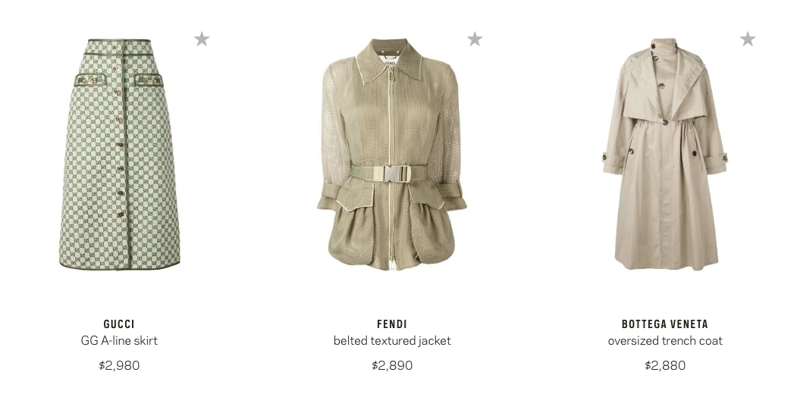
Since about 89% of Americans have access to the Internet, the exclusivity of the luxury retail experience is becoming less important than the convenience of online shopping. That’s why digital luxury marketing and ecommerce has been able to gain so much ground.
What’s more, a generational shift is occurring within the luxury market. Previously, older shoppers—well established in their careers with money to spare—were the main drivers of the luxury market. Now, Millennials are stepping up to the plate.
In fact, Millennials account for 30% of all luxury sales, according to Bain. Plus, they were responsible for 85% of the growth in the luxury market last year alone.
The influence of these digitally native consumers on luxury sales means that brands must alter their strategies to focus more on digital marketing and blended experiences.
On that note...
The Need for an Integrated Online Marketing Approach
None of this is to say in-store experiences aren't still important. On the contrary! It's critical for luxury brands to think of online and in-store as part of a whole.
According to Think With Google, 83% of US shoppers turn to an online search before heading into a store. And consumer surveys show that many will actively research products and pricing on their smartphones while they're physically in the store.
This is why you need more than just multiple digital touchpoints. You also need to tie the in-store experience in as well.
Swiss luxury watch brand IWC provides a great example of this. On their website, they give shoppers an option to chat with a concierge. The idea is that the concierge will curb any reservations one may have about buying.
One can also opt to make an appointment to finalize their purchase in-store.
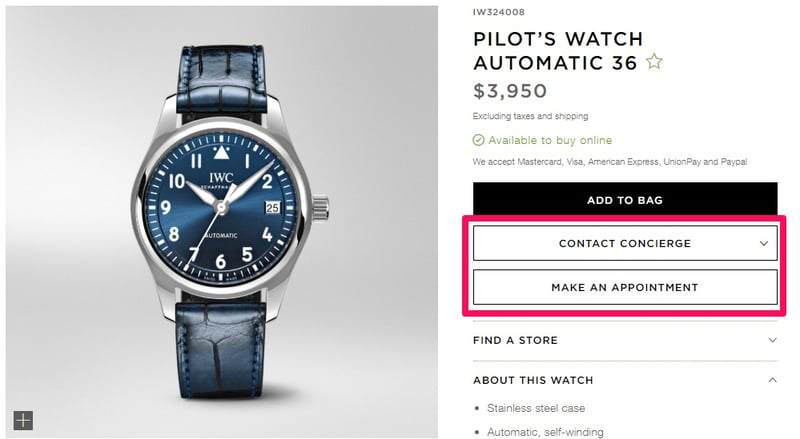
In this way, IWC blends their online presence with an in-store experience perfectly, catching any sales that might be lost by distraction or a desire to see and feel a watch before spending almost $4,000 on it.
Now comes the question: How can you improve your digital luxury marketing strategy?
1. Marry Online and In-Store Sales
Like IWC, you can provide a seamless experience between your online properties and brick-and-mortar stores. Since so many people use the Internet for research before they buy something, it makes sense that both experiences should flow together.
One way to do this is by providing a click-and-collect service. Burberry offers this, for instance, allowing you to pay online and then pick up your item(s) in the store so you don't have to wait for it to ship.
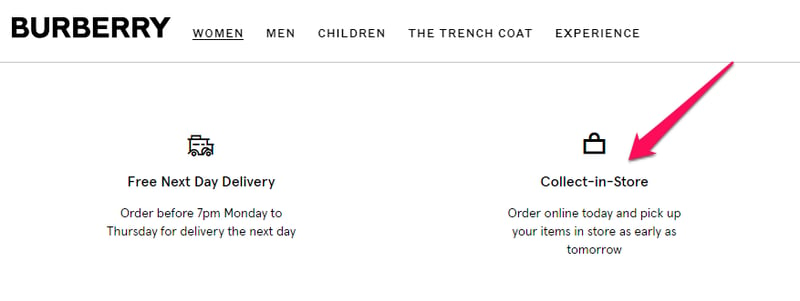
An approach like this utilizes the power of both channels—not to mention, it encourages foot traffic to physical stores.
2. Offer Strong Customer Service Online
People expect exceptional customer service from luxury brands, and this is no different when it comes to shopping online.
Offer a personal touch by having a real customer service rep take part in live chats with visitors on your site. You can also utilize fun tech like AI and chat bots to help answer the most common questions your customers might have, much like Louis Vuitton's Virtual Advisor on Facebook Messenger.
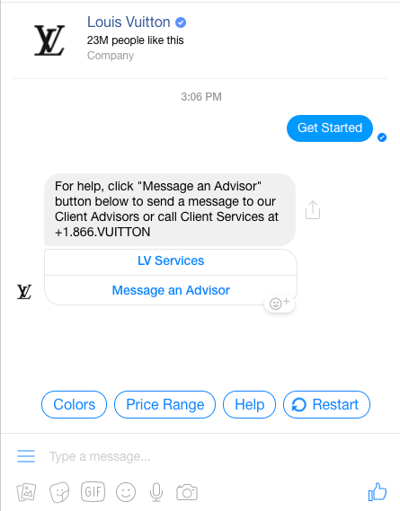
For the most part, consumers are aware they’re interacting with a bot and not a real human being, but what matters the most is getting their questions answered. With a well-built bot, you can reduce friction during their shopping experience, thus preventing them from getting frustrated and moving on before buying.
Remember, you have to provide a great experience across all of your sales channels and for every part of the buyer’s journey—including after they’ve made a purchase.
3. Personalization
Think about it: If you’re spending a lot of money, you’re going to want something pretty special in return, right?
That’s why 45% of luxury consumers ask for personalized services or products. That’s a serious chunk of your potential customer base.
As Ian Rogers, chief digital officer at LVMH Moët Hennessy Louis Vuitton, put it in a recent New York Times article:
‘Market of one’ might sound utopian and science fiction, but it already exists. Open your phone, look at your Discover feed in WeChat or your Instagram feed. You are the only person who sees that feed. That feed is created specifically for you, every single time you open it, including the advertising.
This is why artificial intelligence and machine learning is creating such a stir in the marketing world right now. Paired with customer data gathered across first- and third-party channels, it allows marketers to create highly personalized experiences for consumers that will catch them at the right time, in more relevant ways.
Leveraging Ad Tech for Smarter Campaigns
Programmatic advertising is becoming increasingly popular across the marketing and advertising world. In fact, we've written about it previously on this blog.
Here’s what Arthur Ceria from CreativeFeed has to say:
Everyone is heading in the direction of automation. With it comes more ad inventory in more diverse formats—some TV inventory is becoming available as programmatic; if an audience sees the ad on TV, it can followed up with a display ad on his/her Facebook feed. Programmatic is providing an almost full-funnel tracking and buying of media.
Given how important an omnichannel approach is to reaching the modern consumer, you can imagine how beneficial programmatic can be for brands. This is doubly true for those savvy enough to collect first-party consumer data in order to optimize and refine these campaigns.
For example, Audi collected data on their website to establish remarketing lists, allowing them to advertise to past visitors to get them back on the site. They also utilized Google's in-market segments to discover and reach new customers.
To take it a step further, they gathered insights into customers’ tastes by having users customize their dream rides with a car configurator on their website. This data was then used to inform dynamic ad creative, meaning people saw ads with their unique dream car. Genius!
So, how can you take advantage of this technology—and do it well?
1. Use Programmatic Direct
Naturally, a big concern for high-end retailers is that disagreeable ad placements could damage their brand reputation. Yeah, we've written about this before, too.
With programmatic direct, you can manage the quality and volume of media inventory before your ads are displayed. This should go a long way toward dispelling any reservations you may have by keeping the reins in your hands.
2. Serve a Sequence of Ads
Even if your brand is a household name, people may need to see your products multiple times before they make a purchase.
With programmatic, you can serve a sequence of ads to lure them in over time. For instance, your first ad might be more generic for general brand awareness and later get more specific about exciting key features of a product.
In addition to keeping your brand top of mind, this also allows you to reach your audiences throughout every step of their buying journey—which, for most luxury shoppers, can take longer than the average consumer good.
3. Put Careful Restrictions on Placements
As exciting as it can be to consider all the fun ad tech toys out there, brands must still be strategic when it comes to their ad spend. This can help protect your brand from becoming diluted or associated with the wrong crowd (see #1 above), as well as ensure that you're getting the proper bang for your buck.
For example, Tiffany & Co. has used the following rules for their placements: “a) Only Tier-1 media OTV inventory, b) Should be 60” pre-roll inventory, c) No irrelevant channels with the brand.”
In other words, their parameters ensure premium inventory and that they won't be wasting their ad spend on the wrong placements.
After all, new ad tech means you can automate targeting and achieve higher conversions, but that doesn’t mean a spray-and-pray approach.
Conclusion
If you want to increase sales and expand the reach of your luxury brand, you have no choice but to embrace digital luxury marketing, as well as evolve your omnichannel approach.
Remember, consumers expect a personalized experience these days, from the ads they see to the way they get help. They want things to be seamless as they move from researching products online to buying them in-store—especially when they're doing both at the same time!
By familiarizing yourself with the modern buying journey and the various ways to tackle luxury online marketing today, you can evolve accordingly to meet their expectations and reach them in exciting, more relevant ways.
.png?width=250&height=153&name=CSI-OverskiesRebrand_LOGO-01(smaller).png)

.png?width=100&height=61&name=CSI-OverskiesRebrand_LOGO-01(smaller).png)

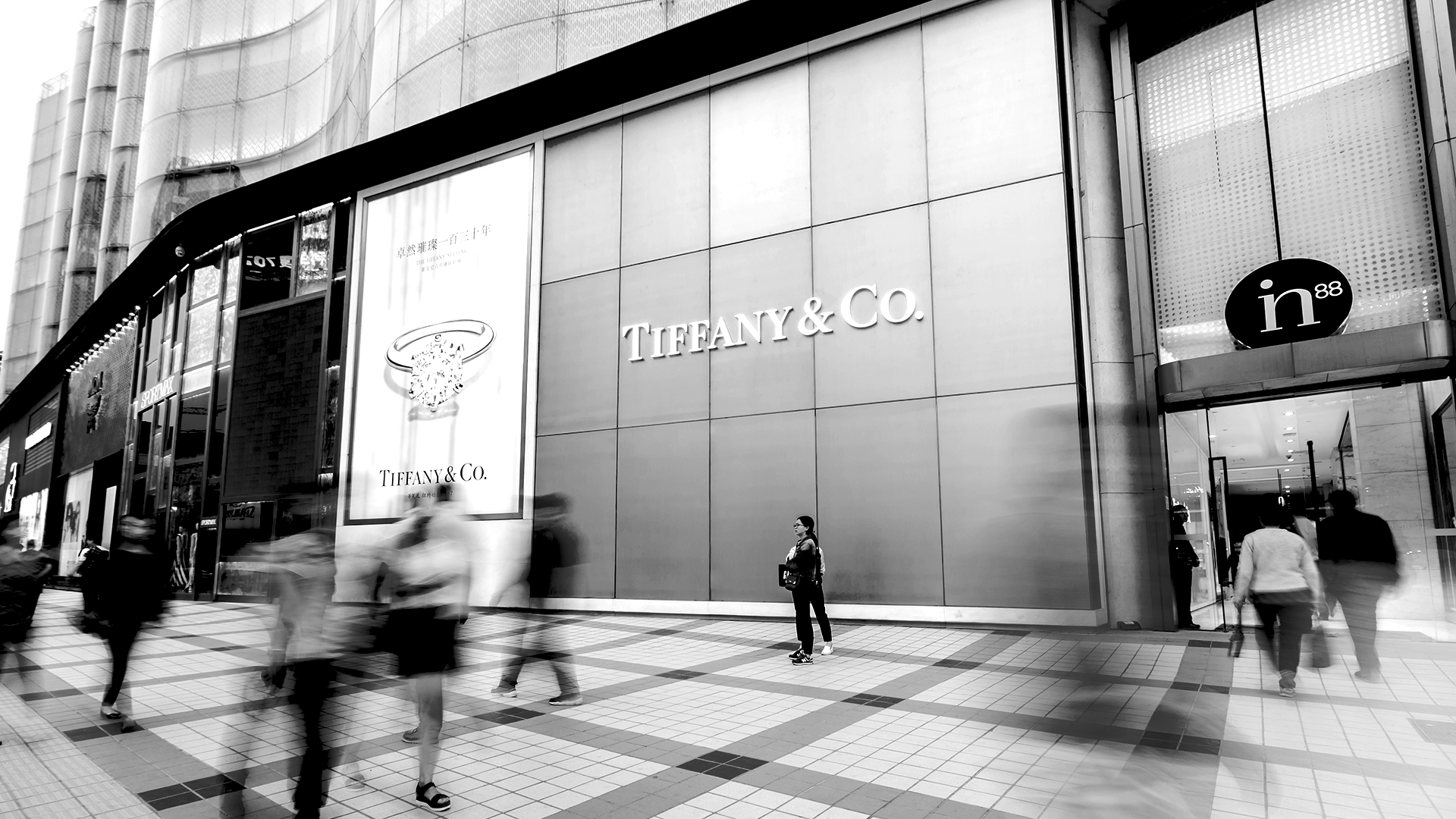
.png?width=88&name=CSI-OverskiesRebrand_LOGO-01(smaller).png)



